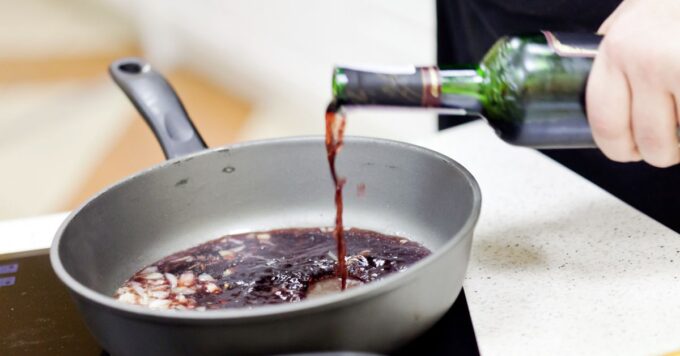
Cooking with wine can transform your dishes, adding depth and complexity that few other ingredients can match. However, using wine in your recipes requires a bit of know-how to enhance the flavors without overpowering them. In this post, we’ll share a few must-know tips for cooking with wine at home to help foodies elevate their culinary creations.
Marinade Ingredients With Wine
Wine can be a fantastic addition to marinades, infusing your ingredients with flavor before they even hit the pan. The acids in wine can help tenderize meat by breaking down proteins and adding moisture. Choose a wine that complements your dish, such as a dry red wine for beef or pork and white wine for chicken or fish.
Allow your ingredients to soak in the marinade for at least an hour or longer if you’re
working with tougher cuts of meat. Finally, pat your ingredients dry before cooking to
achieve a beautiful sear.
Add Wine Early in the Cooking Process
Incorporating wine early in the cooking process allows the alcohol to evaporate, leaving behind the rich, concentrated flavors that enhance your dish. Adding wine too late can result in an overpowering taste or raw alcohol flavor due to the wine’s tannins and acidity.
When making sauces or braises, add wine after sautéing your aromatics before introducing other liquids, such as broth or tomato sauce. This helps meld the flavors, creating a harmonious balance that elevates your dish.
Use the Right Wine for Your Dish
Choosing the right wine is crucial for achieving the desired flavors in your dish. Avoid “cooking wines” as they’re often low quality and contain added salt. Instead, opt for a wine you would enjoy drinking.
A dry variety of white wine, such as a Sauvignon Blanc or Chardonnay, works well with poultry and seafood dishes. A Merlot or Cabernet Sauvignon are excellent red choices for heartier flavors such as beef or lamb. The idea is to enhance your dish without overshadowing it.
Try Cooking With Leftover Wine
Don’t hesitate to use leftover wine in your cooking. While flat wines may not be great for drinking, cooking with them is a great way to reduce waste while adding a delicious touch to your meals. Keep an open bottle of wine in your kitchen for quick pan deglazing, creating flavorful reductions, or adding depth to stews and soups.
Consider freezing wine in ice cube trays for future use if you find yourself with a surplus. You can easily add these wine cubes to dishes as needed, providing a convenient burst of flavor without opening a new bottle.
Wine is a versatile ingredient that many home chefs can take advantage of to bring out new flavors in their meals. Cooking with wine is an art that can take your culinary skills to new heights. By understanding these tips for incorporating wine into your cooking, you’ll enhance flavors, tenderize ingredients, and create harmonious dishes.
Try experimenting with different wines and techniques to develop your signature style. You’ll find that wine becomes an indispensable ingredient in your kitchen, offering endless possibilities to explore and enjoy as you grow more confident.